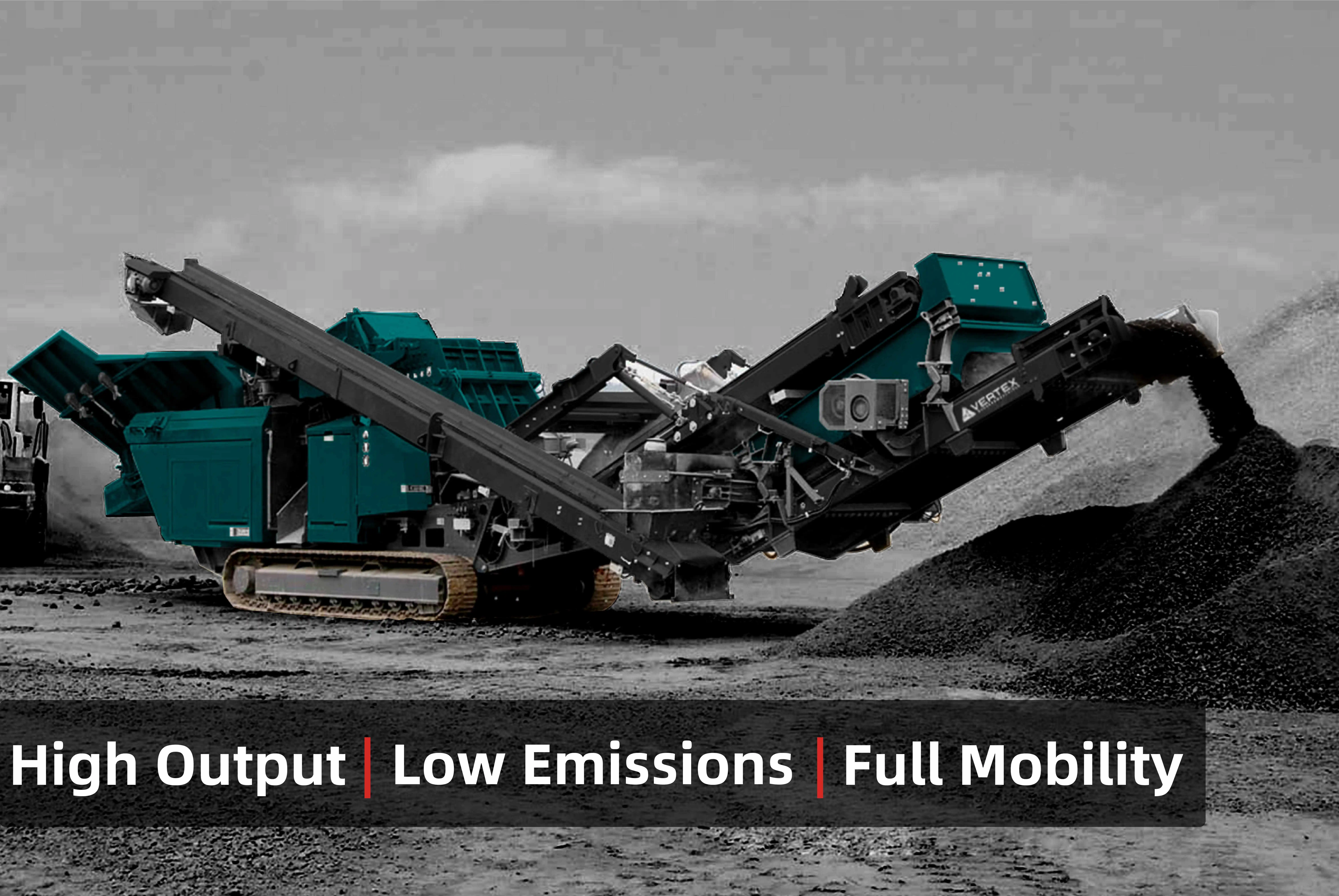
Mobile rock crushers are transforming how industries approach material reduction, combining advanced engineering with mobility to support efficient, cost-effective on-site processing. Traditionally, crushing operations were restricted to stationary plants requiring substantial infrastructure, material transport logistics, and longer project timelines. Mobile crusher systems have changed this entirely—allowing direct processing of rock, ore, and concrete at the source.
A mobile crusher is essentially a compact yet powerful unit mounted on tracks or wheels, integrating multiple functions such as feeding, crushing, conveying, and screening into one self-contained system. It performs the same function as a stationary crusher but offers the critical advantage of mobility. This allows it to be deployed quickly, operate independently, and move across job sites without requiring foundations or fixed installations.
Each mobile crusher system is built around a core crushing chamber. Depending on the material characteristics and operational goals, this chamber can house different crushing mechanisms: jaw crushers for primary rock-breaking and demolition debris; impact crushers for recycling tasks and soft- to medium-hard stone; and cone crushers for secondary or fine crushing of hard, abrasive materials. These crushers can handle feed sizes ranging from 400 mm to over 1000 mm, with final product sizes adjustable via hydraulic or mechanical controls.
The engineering complexity of mobile crushers lies in their integration. Beyond the crushing chamber, a robust feed hopper ensures steady material input, while pre-screens or grizzly bars help remove fine particles before they reach the chamber. Output is managed via heavy-duty conveyor belts with variable speeds and adjustable discharge heights, enabling direct loading into dump trucks, stockpiles, or additional screening units.
Power systems are central to mobile crusher performance. Most machines are powered by diesel engines compliant with international emissions standards such as EU Stage V or US Tier 4 Final. These engines typically offer output in the 200–600 kW range, with high torque at low RPMs for sustained crushing force. In recent years, hybrid and fully electric models have entered the market, offering lower emissions, quieter operation, and significant fuel savings—up to 25% in load-variable conditions. In certain cases, mobile crushers are connected to on-site grid power, providing near-zero emissions for urban or environmentally sensitive areas.
Smart control systems further enhance mobile crusher efficiency. Modern units feature automated feed regulation, hydraulic gap adjustment, overload protection, and real-time diagnostics. Some advanced models incorporate telematics platforms that allow remote monitoring of performance metrics, engine hours, component wear, and fuel consumption. This intelligent oversight supports predictive maintenance and minimizes unplanned downtime, improving long-term operational efficiency.
In terms of performance, throughput capacity varies based on the crusher type and configuration. Mobile jaw crushers typically deliver 200 to 400 tons per hour, while high-end mobile impact or cone crushers can exceed 500 tph under optimal conditions. Crushing ratios are commonly in the 6:1 to 10:1 range, ensuring that feed material is efficiently reduced to target specifications without excessive reprocessing.
The mobility aspect is equally important. Crawler-mounted units can traverse rough terrain and steep gradients, making them suitable for remote mines and mountain quarries. Wheel-mounted crushers, on the other hand, are ideal for quick relocation between job sites in infrastructure or highway construction. Some models are equipped with hydraulic self-leveling, stabilizer legs, and automated track control to facilitate setup on uneven ground.
Applications of mobile crushers span a wide industrial spectrum. In urban construction, they are deployed to process demolition waste and concrete with embedded rebar directly on-site, reducing hauling needs. In mining, they are often placed at the pit edge to crush extracted ore immediately, reducing fleet requirements and energy use. In road and railway projects, mobile crushers produce base aggregates directly from natural rock sources, eliminating the need for centralized crushing plants.
From an environmental perspective, mobile crushers help minimize dust, noise, and fuel consumption. Many models are equipped with water-spray dust suppression systems, noise-insulated engine compartments, and enclosed conveyor transfer points. Their ability to eliminate double-handling also reduces carbon emissions significantly, supporting sustainability targets in large-scale construction and mining projects.
Looking forward, the integration of artificial intelligence, autonomous operation features, and energy recovery systems will further elevate mobile crusher capabilities. AI-assisted material recognition, automated setting adjustments based on feed composition, and cloud-based performance analytics are all being explored by manufacturers. These innovations will enable mobile crushers to operate with greater autonomy, reduce human error, and deliver more consistent output across varied site conditions.
Mobile rock crushers are not simply machines—they are high-performance engineering systems designed to meet modern material processing demands. Whether it’s recycling concrete in a dense urban zone, producing railway ballast in a remote quarry, or handling ore at a mining site, these crushers deliver unmatched flexibility, intelligent control, and technical performance.